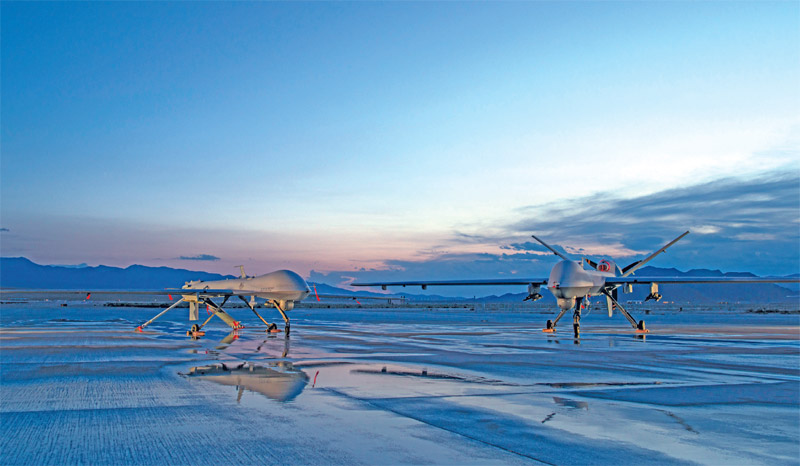India’s indigenous UAV development programme has encountered more misses than hits
Mohammad Asif Khan
Unmanned Aerial Vehicles (UAVs) have emerged as game-changers in modern warfare. Yet, India’s journey in the unmanned domain has been marked by a series of challenges, impeding its progress.

Despite concerted efforts towards indigenous development, the nation has encountered setbacks due to fragmented coordination, technological gaps and regulatory ambiguities. The lack of a centralised nodal ministry for drone technology development has led to disjointed efforts across the civil and military sectors. While the United States, Europe and China have established clear frameworks for incubating UAV technologies and integrating them into the national airspace, India’s lack of policy articulation and cohesive direction has hindered its path toward self-reliance.
Former Indian Air Force (IAF) officer and current director of strategic initiatives in the Drone Federation of India, Gp Capt (Dr) R.K. Narang says the absence of a nodal agency for UAV regulation is a major obstacle in manufacturing advanced UAVs.
“China’s civil aviation authority is investing and creating an ecosystem to develop drone technologies and their integration in the national airspace. In India, we do not have a nodal ministry for drone technology,” he says.
Indigenous Projects
The early example of indigenous UAVs encountering challenges is the Nishant programmes. Launched by the Defence Research and Development Organization (DRDO) in the early 2000s, the programme aimed to create an autonomous reconnaissance drone. However, technical issues, including engine reliability and control system problems, plagued the programme. The Indian Army’s decision to crash limited units of the Nishant in 2011 because of operational difficulties highlighted the gap between ambitions and operational realities.
The struggle continued with the ambitious Tapas-BH201 project, also known as Rustom-II. Intended to be a cutting-edge surveillance and reconnaissance UAV, the project faced weight issues and over-engineering, delaying progress. Delays were exacerbated by slow sensor integration, hindering certification and evaluation trials. This experience showcased the intricate technical challenges involved in developing advanced UAVs. The maiden flight of Tapas-BH201 took place in November 2016.
Policy hurdles have also hindered indigenous UAV projects. The Tapas-BH201 faced delays because of clearance issues from government agencies such as the Directorate General of Civil Aviation (DGCA) and the Ministry of Defence. This bureaucratic red tape underscored the need for streamlined regulatory processes to expedite project timelines.
The Aura project, initiated to develop an autonomous unmanned combat vehicle with high-speed reconnaissance capabilities, faced technological hurdles. The project’s vision of incorporating a dry version of the Kaveri engine and advanced stealth properties posed significant challenges. The slow progress highlighted the stark reality of transitioning from ambitious goals to the painstaking groundwork required for advanced UAVs.
Amid these challenges, India’s UAV landscape remains a mix of limited successes and significant gaps. While initiatives like the Abhyas and Lakshay pilotless target drones and the Netra lightweight autonomous UAV for surveillance have achieved success, the overall trajectory of the bigger UAV programmes has been slow.
Self-Reliance
Gp Capt. Narang emphasises the need to cultivate indigenous technologies for crucial components of drone systems. He highlights vulnerabilities in components such as command and control systems and autopilots, stressing the necessity of building these within India. These vulnerabilities underscore the significance of reducing dependence on foreign original equipment manufacturers (OEMs) and strengthening domestic capabilities.
“These technologies have to be developed and validated. Tomorrow, where will the logistic drones land? With all those technologies, what should be the reliability of the communication? All this has to be developed, tested and validated depending on each technology readiness level in the country,” he says.
Civil-military fusion encompasses both economic viability and capability enhancement, synergising advancements in the civil sector with the demands of the armed forces. By addressing challenges through a comprehensive approach that includes a nodal ministry, a well-defined roadmap, indigenous technology development and proactive research programmes, India can pave the way for a future where drones play a pivotal role in various domains, from civilian applications to defence imperatives.
You must be logged in to view this content.

